Reed Hundt Radio Show
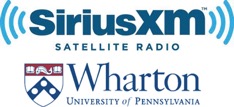
How can you use the Internet to boost sales of your product? Can the principles of game play be applied to your business plan? What’s on the horizon in business hard and software, gaming and communication? (The hosts) bring their unparalleled knowledge of technology—the latest advances, the new ideas and the legal ramifications for you and your business.
The broadcast community was incensed during his chairmanship when he chose one year to go to a major ITU conference rather than kowtow to them at the annual NAB convention in Las Vegas, even though all the other commissioners would be going as well as every senior FCC staffer dealing with broadcast issues. Certainly affiliation with a “non broadcaster radio program” will further decrease his status at NAB. But I assume he doesn’t care and why should he?
Mac@30
Today is the 30th anniversary of the introduction of the Apple Macintosh. It may not come as surprise to many readers of this blog that your blogger has been a Mac user from the very beginning. We decided to buy a Mac when they first came out 30 years ago, but could not actually get one until March 17. That day was St. Patrick’s Day as well as the start of Purim in the evening. To see if the new computer and printer were as easy to use as they promised, we set them up and tried to design and print place cards for people who were coming to dinner at our house that night. For the unusual confluence of holidays we designed the cards with each person’s name and a shamrock and a 3-cornered hat (associated with the evil Haman in the Book of Esther). Amazingly we finished the set up, design, and printing in about an hour and proceeded with the rest of the dinner preparation - the original Mac was that easy!
In the Vic Hayes presentation in previous post and the 2011 Steve Jobs memorial post we document how Apple played a key role in making Wi-Fi a ubiquitous service, more than the radio LAN for cash registers that was an original goal. Thus the Apple design philosophy of easily approachable technology also has had a key impact on the wireless industry - resulting in the cellular industry’s love/hate relationship with unlicensed spectrum and their codependency with it.
Below is a link to NPR’s excellent discussion today of the anniversary and interviews with members of the original team.
Vic Hayes, Founding Chair of 802.11, Receives "Lovie" Lifetime Acievement Award
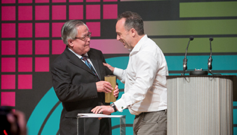
The Lovie awards, named after Ada Lovelace, the legendary first software writer, are not well known in the US. They “recognise the unique and resonant nature of the European internet community – from Europe’s top web and creative networks and content publishers to cultural and political organisations and bedroom bloggers.” The citation for Vic says
His work helped to usher in the age of the ubiquitous Internet, providing users with Ethernet-free connections and a brand new sense of connected mobility. That freedom led to countless innovations in hardware and software that have set the standard for the modern Internet age.
Congratulations to Vic on this wonderful recognition! I was honored that he chose this occasion to mention my role also in his discussion of the origins of Wi-Fi. See the video below at 2:30
NPR Interview on a "More Mellow" NSA
The National Security Agency "would welcome" the creation of a public advocate's position at the court that oversees its electronic surveillance programs, said its outgoing deputy director.
John C. "Chris" Inglis, who retires Friday after more than seven years as the NSA's No. 2, told Morning Edition host Steve Inskeep that "I would only put the caveat on there that it needs to be operationally efficient."
"So, let's say that I'm authorized to target the head of al-Qaida worldwide and I'm actively doing that," he continued. "I'm trying to figure out what communication services — selectors — that person is using. If at every moment in time somebody had to authorize me to put the next selector on — 'He just changed his email address, can I put that on?' — if that's where the advocate stands in, that's operationally not terribly efficient.
"But if there's going to be some novel interpretation of the law — if there's going to be some authority that's going to be applied as an extension of the law [that] might say, 'I've got a different view,' we'd welcome that."
The interview is a refreshing breath of fresh air in the polarizing debate over the impact of the Snowden disclosures. Perhaps a real dialogue is possible?
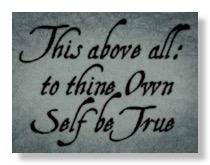
We recommend that the current commissioners demand a report from the staff over what exactly was FCC’s role in this and what lessons were learned. Perhaps the FCC IG might do this to get away from his usual practice of focusing solely on USF abuse and avoiding anything that might embarrass top leadership even though his statutory mandate is the same as all other agency IGs. (While the IG statute allows some cabinet secretaries to order their IGs to stay away from specified intelligence issues, the FCC IG is not subject to such a statutory limit.)
IEEE Communications Society Award for Public Service in the Field of Telecommunications

Chair ComSoc Award Committee Andreas Molisch, your blogger, ComSoc President Vijay Bhargava
At the December 2013 IEEE Global Communications Conference (GLOBECOM), you blogger was awarded the IEEE Communications Society Award for Public Service in the Field of Telecommunications. This award is given for “major contribution to the public welfare through work in the field of telecommunications”.
The citation for the award read “For pioneering spectrum policy initiatives that created modern unlicensed spectrum bands for applications that have changed our world."
As you can see comparing the above photo with the below 1985 video of FCC’s adoption of the ISM band rules that are the basis of Wi-Fi, Bluetooth, ZigBee, and various other unlicensed services, your blogger hasn’t changed much in the past 28 years.
Thanks to IEEE ComSoc for this great honor, awarded last year to Dr. Veena Rawat, formerly of Industry Canada - FCC’s great counterpart to the North. Among Dr. Rawat’s many major accomplishments was the timely introduction of Canadian policies that paralleled the FCC’s ISM band rules at a time when FCC was still having misgivings about what it had done.
UPDATE
As if on queue, Chmn. Wheeler said in a speech the day after this was posted:
One of the FCC’s great success stories was the creation of unlicensed uses in the 2.4 GHz band in the 1980s. Who would have imagined that WiFi, Bluetooth, and other innovations would result?
Dockets @ FCC
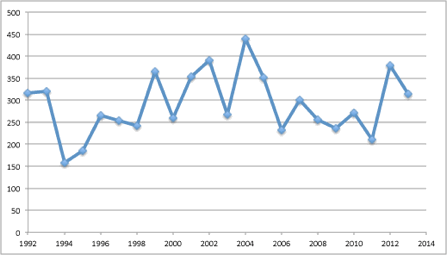
Number of dockets initiated vs. year (Source - ECFS)
Ever wonder how many dockets FCC initiates each year? As a public service we are releasing the above graph as well as the raw data. We can recall that at one point in the 1980s the number got above 1000, but the count can be misleading. Sometimes routine FM allotments chew up dozens of docket numbers without any significant policy issues. In recent years docket numbers were assigned to routine waiver requests handled on delegated authority which may have had little policy interest.
On the other hand, the ultracontroversial LightSquared matter had no docket number for a long time and was lingering in the International Bureau’s obscure IBFS filing system under a long file number, e.g. SATMOD2010111800239, however it ultimately got its own mainstream docket number (Docket 11-109) number where it has accumulated 11,370 filings to date.
So the “Electronic Comment Filing System” in practice does not contain all proceedings with comments just as the “Universal Licensing System” does not contain all licenses. Such data base chaos enables business for consultants such as your blogger who can guide clients through what should be a more straightforward process.
Most of the FCC’s online systems still reflect the early 1990s rushed decisions during the Hundt chairmanship to implement e-filing ASAP with the tools that were available at that time. However, ECFS actually has quirks that go back to its predecessor in the 1980s Fowler chairmanship as a quick fix to the “Mrs. Field’s cookie scandal” of that era. Since these basic design decisions were made FCC has never had the resources to address basic design problems. 8th Floor denizens would rather spend money on fun new projects like the Spectrum Dashboard then get the basic infrastructure working.
Something FCC top management
appears to be unable to do:

Thus the staff dealing with nonauction issues probably should bring some books to the office to read for the next year because work products requiring 8th Floor attention for approval probably will not get much. While the FCC has great discretion under 47 USC 155(c) to delegate authority to its staff or a subset of commissioners, since the 1930s it has been reluctant to do so. This is why your blogger feels that UK’s Ofcom is more productive than FCC since its commissioner-like board doesn’t have to stick its fingers into every decision -- whether they add value or not.
Bell Labs Today:
The State of US Telecom Industry R&D
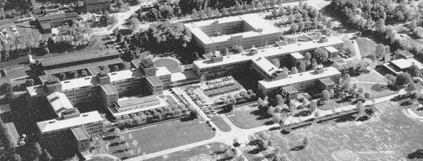
Bell Labs’ Murray Hill, NJ headquarters circa 1970 in the “golden age”
iTnews, an Australian newsletter, published a recent interview with Alcatel-Lucent CTO Marcus Weldon, “the product executive now charged with also running the famed Bell Labs”. They report that he “is perplexed as to why he was chosen to manage an organisation with a heritage in fundamental research.” As mentioned here earlier, your blogger is sentimental about his work at Bell Labs early in his career.
Weldon is quoted as saying “I'm incredibly optimistic that this is the next great era of Bell Labs. It's a little bit arrogant to state that, but on the other hand I wouldn't have taken the job if I didn't believe it were true."
The interview reveals that there are now just 700 people working at Bell Labs. By contrast, prior to 2001, Bell Labs had 11,000 employees at Chicago area locations alone! At the beginning of its existence, Bell Labs employed 4,000 individuals. In 1978, there were reportedly about 25,000 employees. Another source says the “between 1925 and 1981 the number of employees ... had grown from a little over 3,000 to 24,078.” Further that number included 3,328 with doctorates. Indeed, the Murray Hill headquarters was the center of the Bell Labs’ Research organization (as opposed to development or systems engineering which were larger and in other locations) and Research alone had 2,800 employees.
In the late AT&T monopoly era prior to Divestiture, Bell Labs was funded out from the “gross national phone bill”. I recall, but can’t find documentation for, that the pure research part of Bell Labs received something in the range of 0.5 - 1% of the gross national phone bill while the development of specific hardware and software was paid separately by the former Western Electric, the captive supplier and first choice vendor to the BOCs.
Now a great part of the size reduction of Bell Labs was because of industry restructuring and was inevitable. Much of the old Bell Labs staff was involved in development of specific new products that were then manufactured by Western Electric. In Alcatel-Lucent, divisions of A-L do their own development of products. But I have to admit that I was shocked that it is down to 700 employees. The old Nortel had a small Bell Labs-like organization and that is all gone now. But how much US-based, or even North American, industry-funded telecom research is going on now? Qualcomm clearly has a big research operation, but does anyone else?

Last summer AT&T announced that it was “opening research centers in Atlanta and Plano, Texas, part of an attempt to shed its stodgy Ma Bell image by innovating in such areas as home security, inventory tracking and in-car online services.” Further “the company also has research centers, known as foundries, in Israel and Palo Alto, California. There are 71 employees working at the foundries now, and AT&T expects that total to reach 92 by year-end. “ 92 employees - wow! Can AT&T (2012 revenue = $127.434 billion) really afford it?
An AT&T Research employee contacted me about a year ago and announced he was leaving because
“Sadly the greater leadership in AT&T have decided that internal research activities focused on physical layer technologies (current or future), is no longer in the interests of AT&T's going forward. Based on recent Lab wide meetings, the new leadership made it very clear that phy layer activities are now going to be deemphasized and the Research focus going froward will be big data, cloud and network software focused… Network technology will now likely be handed over to our vendors for development and innovations - At this recent meeting I challenged how these vendors will know what to build and plan for going forward, and aren't conferences and standards activities a very important part of that idea exchange. I was told that only standards meetings that have a direct bearing on current network activities will be supported by "AT&T representatives" and that Research shouldn't be focused on such near term actives - naturally I protested this position but it fell on "deaf ears". Worse even university and broader collaborations will be directed at network software not hardware.”
CableLabs is an example of an industry-funded R&D organization but has only “approximately 160 employees and an on-site population of visiting engineers and consultants.” Industries like the cellular industry could fund a R&D facility like CableLabs or the electric power industry’s Electric Power Research Institute, but seem to be more interested in lobbying for near term gain. (The broadcast industry’s NAB Labs might appear possibly promising, but is most likely just a PR effort from a PR-focused trade association wanting the appearance of a counterpart to CableLabs. An interview with the NAB’s CTO indicates that the main focus is testing the technology developed by others.)
To maintain US competitiveness in telecom technology, not to mention avoiding the national security implications of being totally dependent on offshore companies for all telecom infrastructure, isn’t a greater US-based R&D effort needed? Why not the EPRI model?
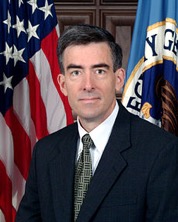



![Validate my RSS feed [Valid RSS]](valid-rss-rogers.png)

